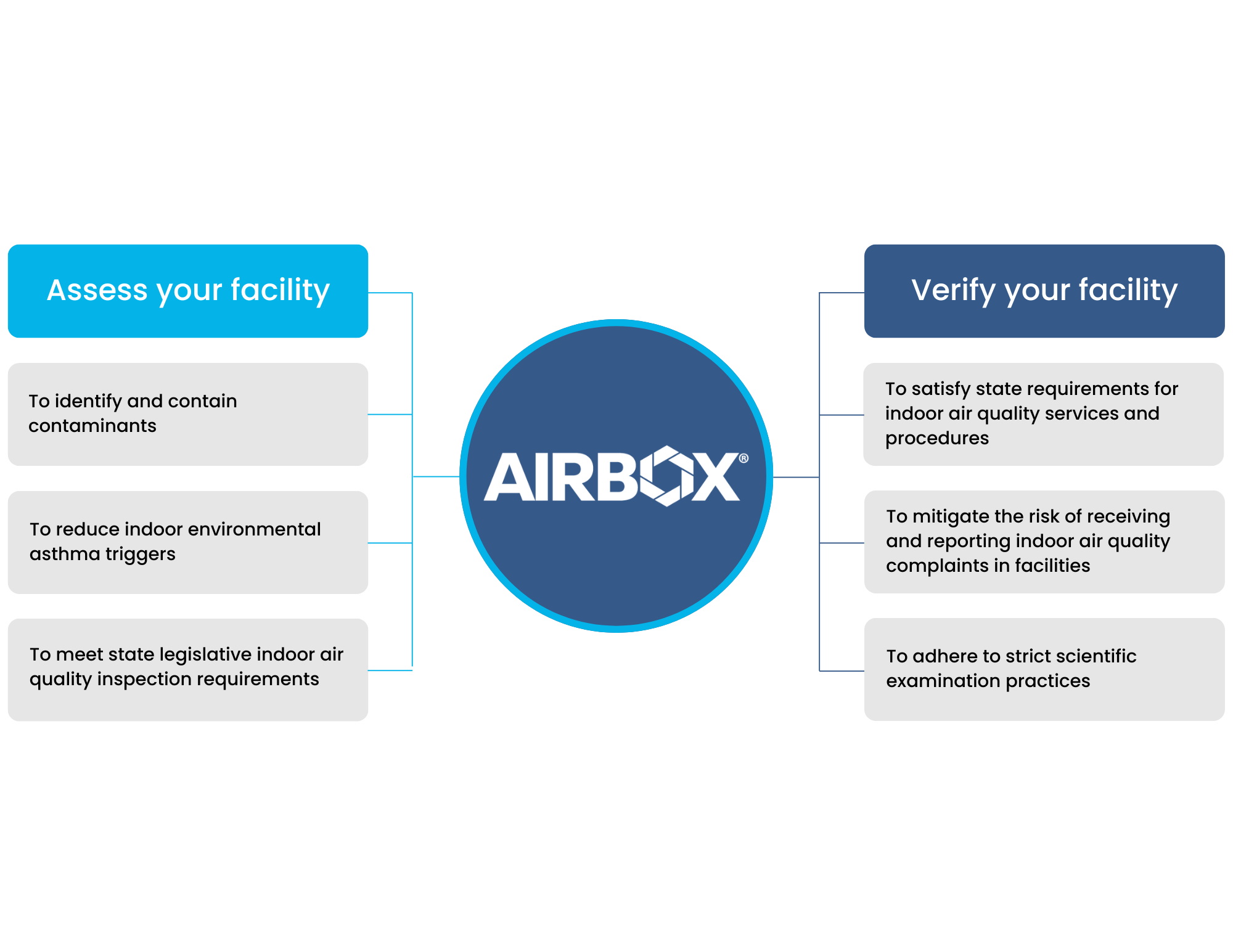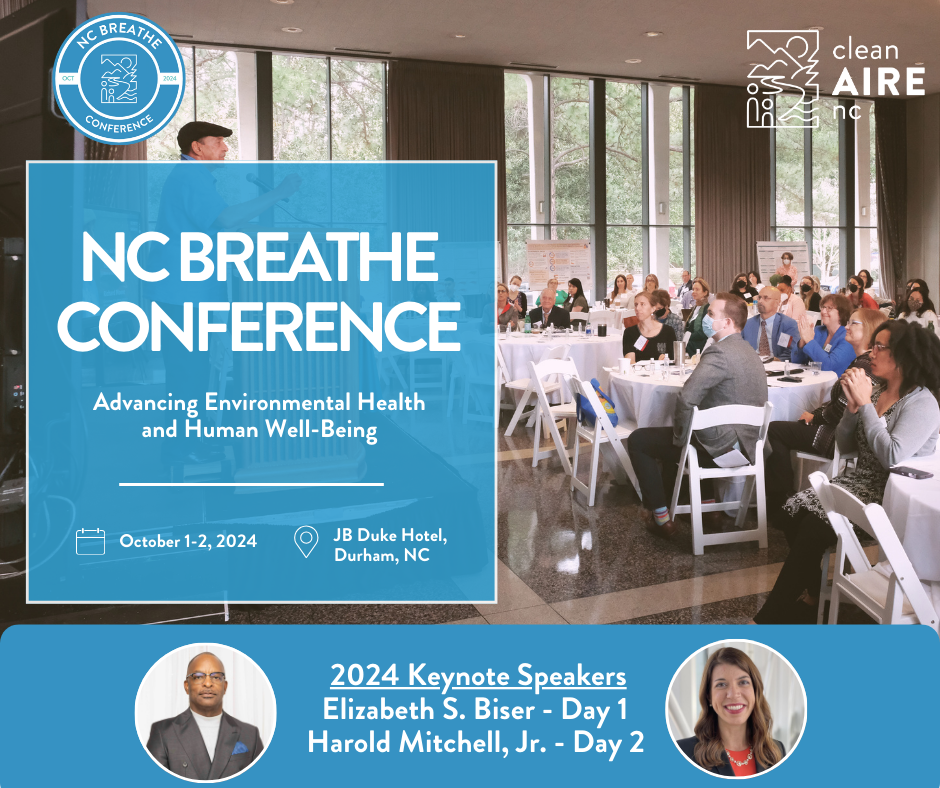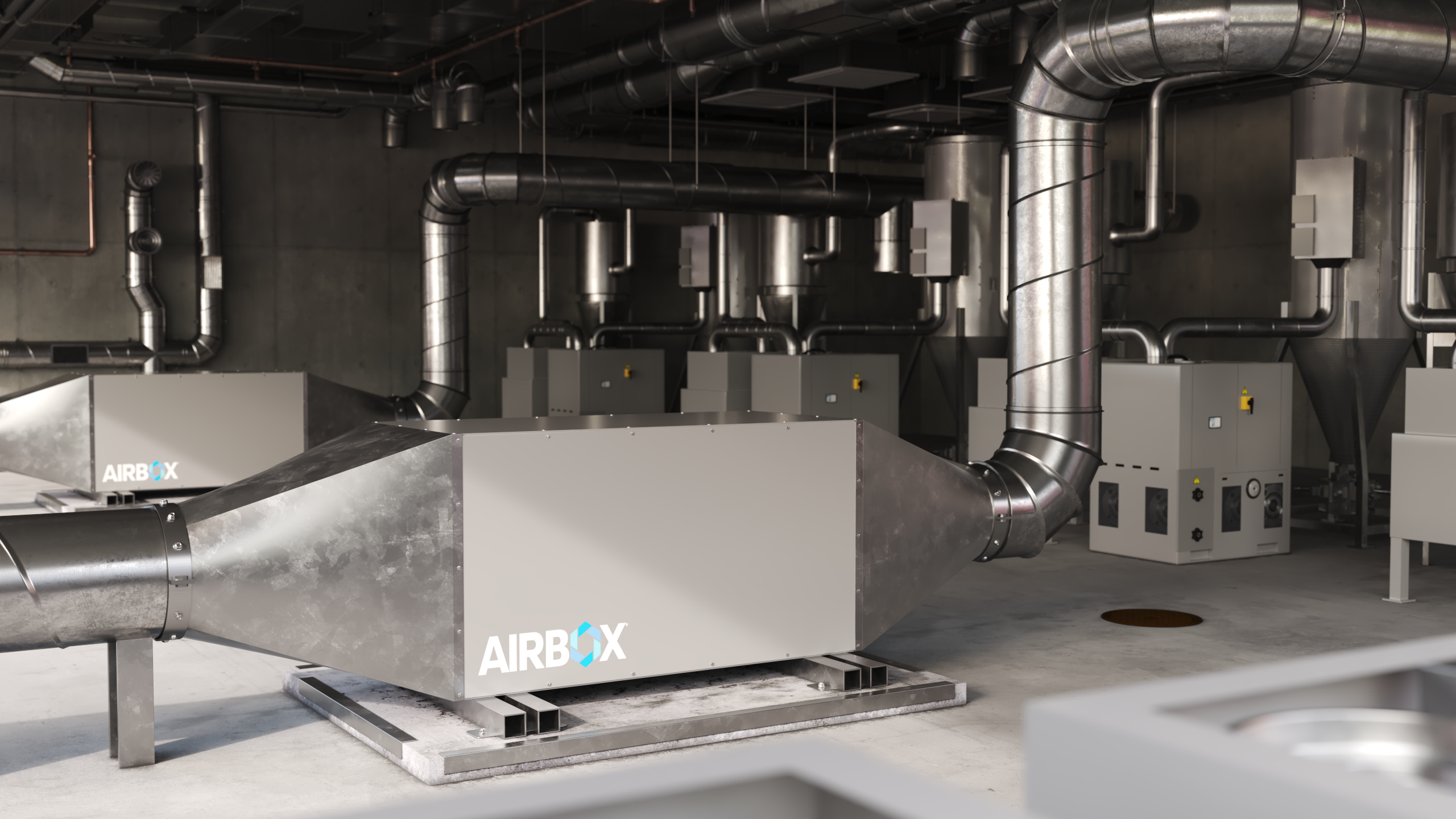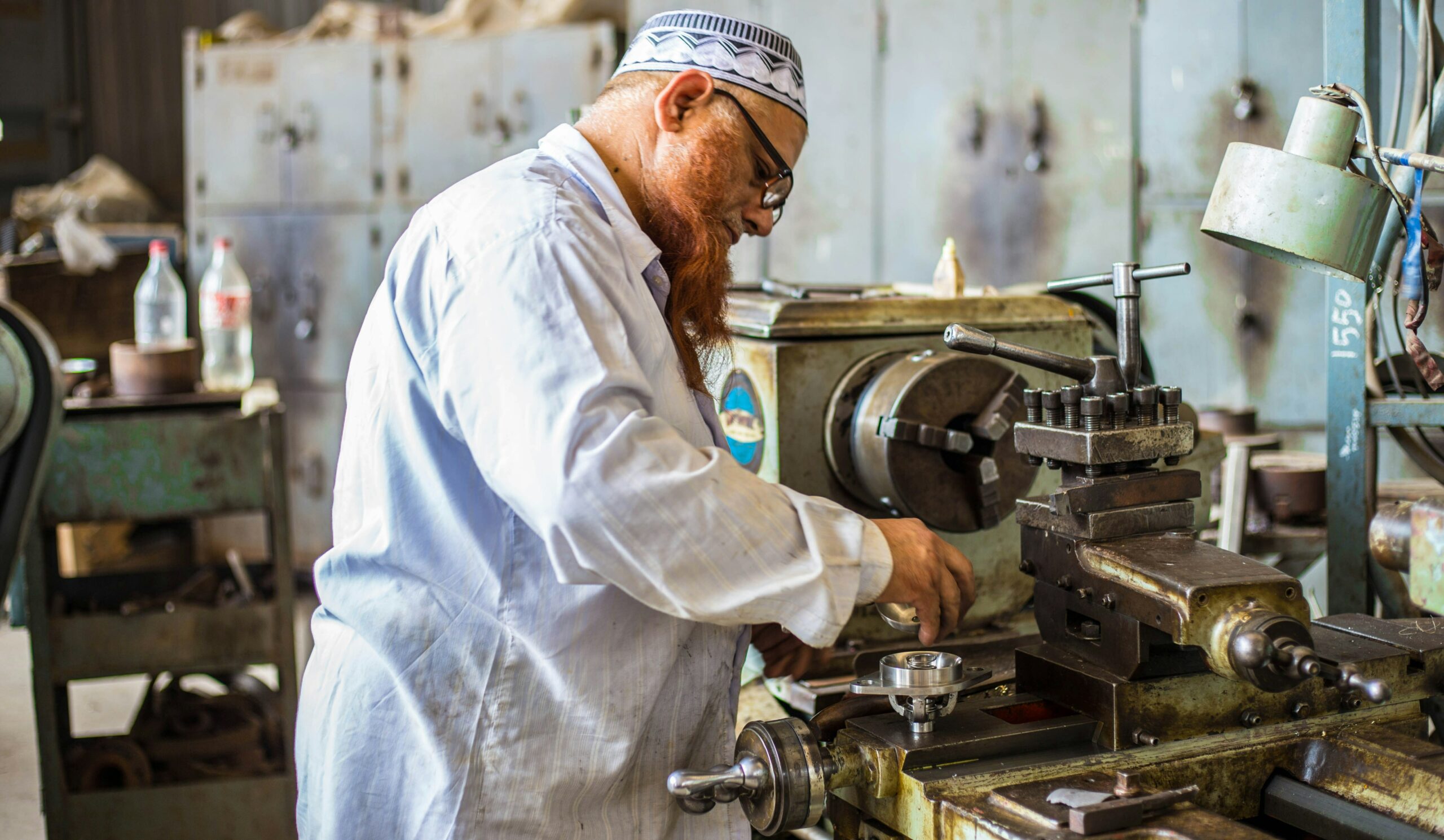The AirBox Indoor Air Quality Verification Testing
Find out how clean your
air is – or how dirty
Assess and verify your indoor air quality


What is an Air Quality Verification Test?
The objective of the AirBox Indoor Air Quality Verification Testing is to conduct a thorough examination of air quality within client facilities, with a primary focus on identifying key contaminants of concern (COCs). These studies are rooted in the latest scientific research pertaining to contaminants typically found in the specific industrial or commercial settings.
To ensure the accuracy and relevance of our findings, we adhere to the most up-to-date guidelines and requirements provided by ASHRAE (American Society of Heating, Refrigerating and Air-Conditioning Engineers) Standards. These standards are widely acknowledged for their stringent criteria for maintaining optimal indoor environmental quality.

In addition to leveraging these standards, our approach includes the deployment of technicians with high-precision portable sensors capable of detecting and measuring a wide range of air contaminants at high resolution. This technology enables real-time monitoring and analysis of air quality, providing detailed insights into the types and concentrations of contaminants present.
Furthermore, we will complement our on-site sensor data with thorough laboratory measurements. These lab analyses will provide a deeper understanding of the properties of the identified contaminants, offering a more nuanced view of the air quality within any and all spaces. This comprehensive approach, combining state-of-the-art sensor technology with in-depth laboratory analysis, ensures a precise assessment of air quality within commercial facilities.
It will provide the foundation for effective strategies to mitigate the identified COCs, thereby safeguarding the health and well-being of building employees and visitors alike.
Audit your air in
4 simple steps
Our data-driven Air Quality Assessment and Verification takes the guesswork out of what’s going on with your air.
It tells you exactly what contaminants are in your indoor air and how many of them. These steps will lead you
from guessing to knowing—and from dirty, unhealthy air to clean.

STEP 1
Floor plan submittal and proposal
You need an accurate picture of indoor air contaminants. That’s why the AirBox Indoor Air Quality Verification Testing process has you submit a floor plan first. Our Analytical group will then recommend the best sampling points in the facility.

STEP 2
Analytical group performs assessment
AirBox analytical technicians, led by our LEED accredited Environmental Scientist, will provide a quantitative assessment of particulate and gaseous contaminants. We use highly calibrated sensors and air sampling diagnostic equipment to provide the most accurate results.

STEP 3
Lab analyses and data reporting
We combine data from our cutting-edge sensor technology with in-depth lab analysis performed by an accredited lab to ensure a comprehensive, accurate assessment and verification of air quality. This points the way for effective strategies to mitigate the identified contaminants.

STEP 4
Improved indoor air solutions
The results of the verification testing are then reviewed by our analytical group and engineers to provide a science-backed strategy to effectively improve the indoor air quality of your facility using ASHRAE Standard 241 Compliant air cleaners.
What contaminants are included
in the verification testing?
List of Contaminant of Concerns/Indicators
| Design Compound or PM2.5 | Acceptable IAQ | Reference |
| Carbon monoxide | 9 ppm | ASHRAE Standard 62.1-2022 |
| PM2.5 | 12 µg/m3 | ASHRAE Standard 62.1-2022 |
| Ozone | 70 ppb | ASHRAE Standard 62.1-2022 |
| Speciated VOCs (lab measurements) | ||
| Acetaldehyde | 140 µg/m3 | |
| Acetone | 1200 µg/m3 | ASHRAE Standard 62.1-2022 |
| Benzene | 3 µg/m3 | ASHRAE Standard 62.1-2022 |
| Dichloromethane | 400 µg/m3 | ASHRAE Standard 62.1-2022 |
| Formaldehyde | 33 µg/m3 | ASHRAE Standard 62.1-2022 |
| Naphthalene | 9 µg/m3 | ASHRAE Standard 62.1-2022 |
| Phenol | 10 µg/m3 | ASHRAE Standard 62.1-2022 |
| Tetrachloroethylene | 35 µg/m3 | ASHRAE Standard 62.1-2022 |
| Toluene | 300 µg/m3 | ASHRAE Standard 62.1-2022 |
| 1,1,1-trichloroethane | 1000 µg/m3 | ASHRAE Standard 62.1-2022 |
| Xylene, total | 500 µg/m3 | ASHRAE Standard 62.1-2022 |
Need more info?
Get a concise summary detailing the sources and associated
health effects of each selected compound
Request your AirBox Indoor Air Quality Verification Testing
Welcome to the era of clean air
AirBox is America’s top manufacturer of commercial-grade air
purification systems, proven to eliminate over 99.99% of harmful
airborne particles and pathogens in indoor environments.
Clean Air Insights

AirBox Showcases Innovative Solutions at the CleanAIRE NC Breathe Conference

AirBox is First to Market with High-Volume Air Purification for Commercial Application, Solidifying its Position as an Indoor Air Quality Industry Pioneer

The Airborne Act is Back – Tax Credits for Indoor Air Quality Improvements

Navigating the Future of Indoor Air Quality: AirBox Embraces the New IAQP Calculator

The Vortex High Volume Air Purifier: Clean Air for High Impurity Environments



